In a popular Yemeni joke, God returns to see what has changed on Earth over the millennia. An angel flies him over Europe and God doesn’t recognize anything. The same happens over America and Asia. Finally the angel guides them over Yemen, and God says “Oh, just like I left it!”

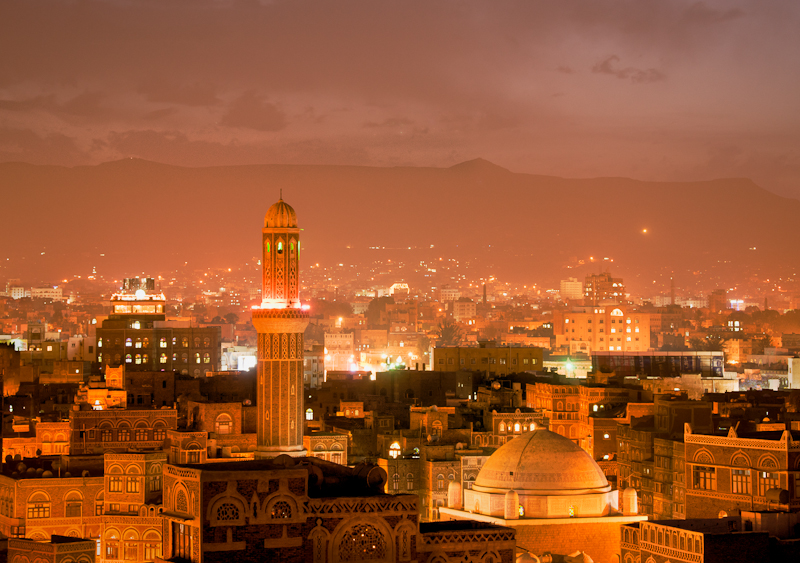
My friend Joshua Maricich had been working on me to visit him in Yemen for over a year before I finally traveled there in April, 2010. For over three years, he has worked as a journalist in the Old City of Sana’a, the capital of Yemen and a UNESCO World Heritage Site. He had seen my black and white landscapes and told me repeatedly that no one had done that kind of photography in Yemen.
I love a good adventure, but that usually involves the Great American West, not some place with tribal kidnappings and Al Qaeda training camps. What finally turned the tide was reading the first chapters of the book Joshua was writing about his experiences in Yemen, and realizing that this was a place and culture unlike any I had imagined, and the opportunity of a lifetime. Risk was overwhelmed by curiosity, and the chance to photograph, guided by an insider’s knowledge, in an unknown place on the other side of the world.
Information on Yemen is scarce, so thorough planning was impossible. My intention was to go to locations I thought would work well for black and white landscapes, and then adapt as quickly as possible to the rest. I did a lot of adapting. I was the only photographer I encountered during the weeks I was in Yemen.
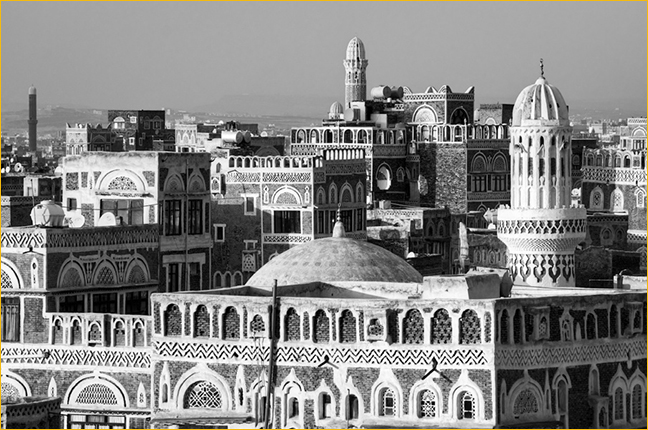
Sana’a, Yemen’s capital, is the oldest continuously inhabited city in the world. Legend has it that Sana’a was founded by Noah’s son Shem after the ark landed. Despite this urban maturity, I found no evidence of anything like a camera shop in Sana’a. I had been prepared for this and had thought carefully about everything I might need. I knew my usual large or medium format film equipment would be inappropriate for the varied locations and fast pace I had planned.
I had not used an SLR for ten years and had completely missed the Canon-Nikon digital wars. I finally made my choice a year ago when I read about the Sony a900, and had become comfortable with its basic features. The interface was simple and landscape-friendly, so with some dedicated practice and reading, I felt ready. I bought a handful of spare batteries and CF cards and prepared for the situations I thought I would encounter. I took the Sony/Zeiss 24-70 and Sony G 70-300 zooms and a Minolta 50mm f/1.7 as a backup normal/low light lens. I also brought an Olympus E-P1, but found it was less pocketable and a more significant step down in image quality than I wanted, so I usually just carried the Sony. Despite the need to travel light, my Gitzo GT2540 tripod and Acratech ball head were indispensable.
People
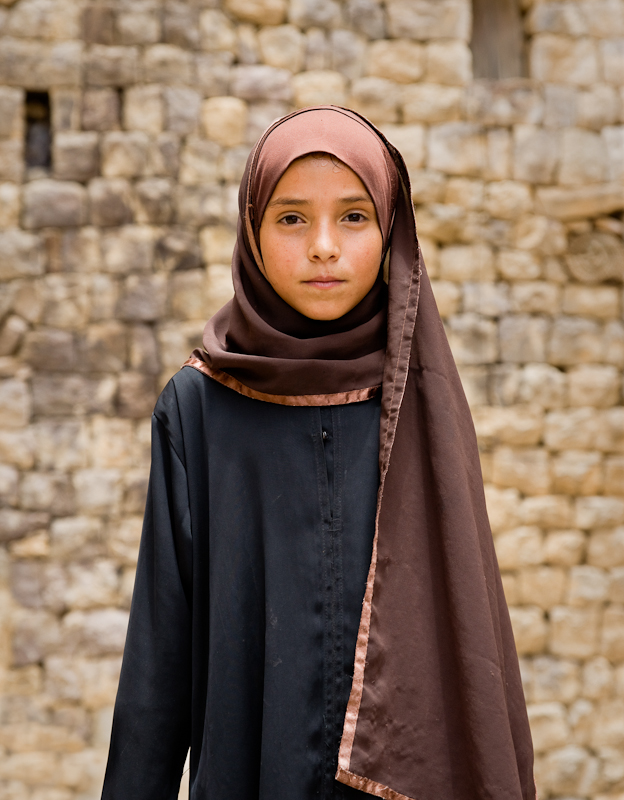
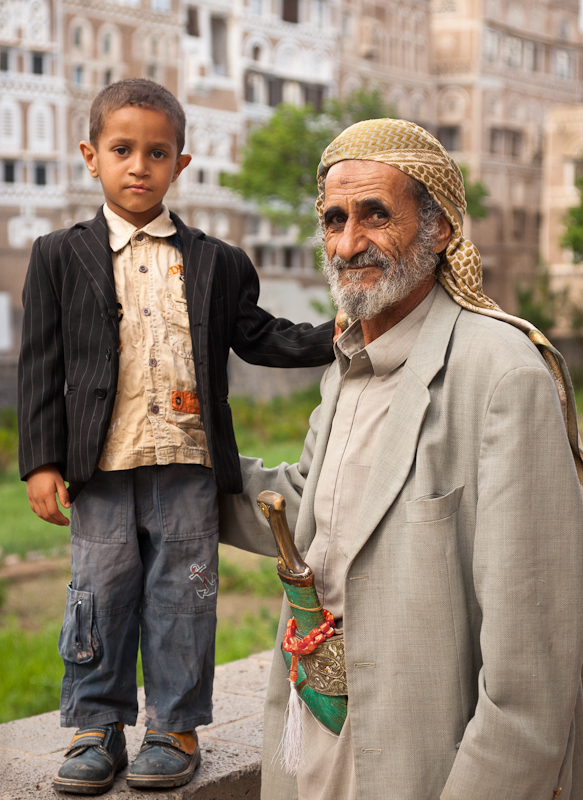
The first shock to my creative expectations was the Yemeni people. The people and culture of Yemen are firmly, but comfortably locked in centuries-old traditions. I found the Yemeni people to be hospitable, confident, and apparently without envy of the lifestyle much of the rest of the world embraces. Western culture and products are extremely rare (except Coke, of course), so it was refreshing to find that my being an American meant almost nothing to the people I got to know. I truly enjoyed trying to tell the story of these people and their lives as I photographed them. It forced me to remember fundamentals of portraiture and street photography I learned decades ago and had never used in the wilderness.
Decisive Moments
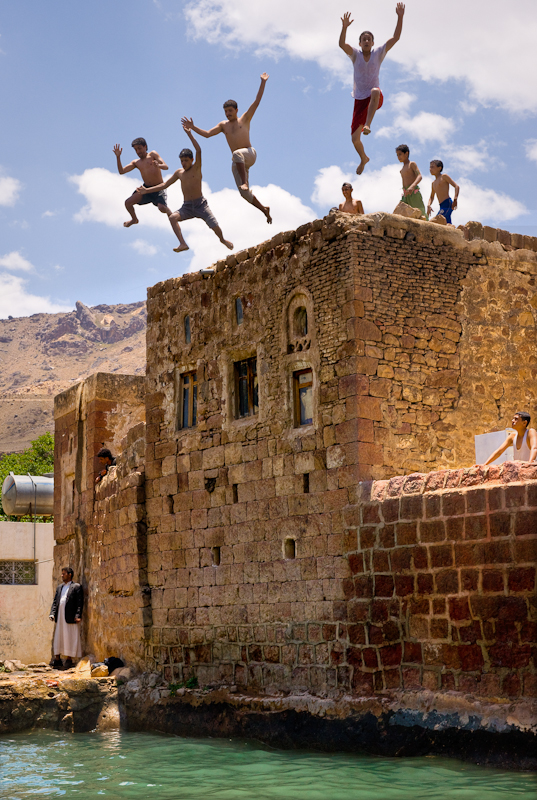

Unlike the slow, deliberate pace of large format landscape photography that I was used to, I found myself in a constant fiow of visual opportunities that demanded alertness and the ability to change camera settings quickly. The well positioned controls on the camera were invaluable, and I used the Sony’s three presets much more than I had anticipated. The old saying that “fortune favors the prepared” certainly came into play, but I was unusually fortunate. I encountered subjects including: approaching storms at sunset in the terraced highlands of the Haraz mountains; the changing light from a rooftop over the Old City of Sana ’ a as I listened to the evening call to prayer from a hundred minarets; and traditional wedding ceremonies on Thursday nights in the Old City.
Photojournalism
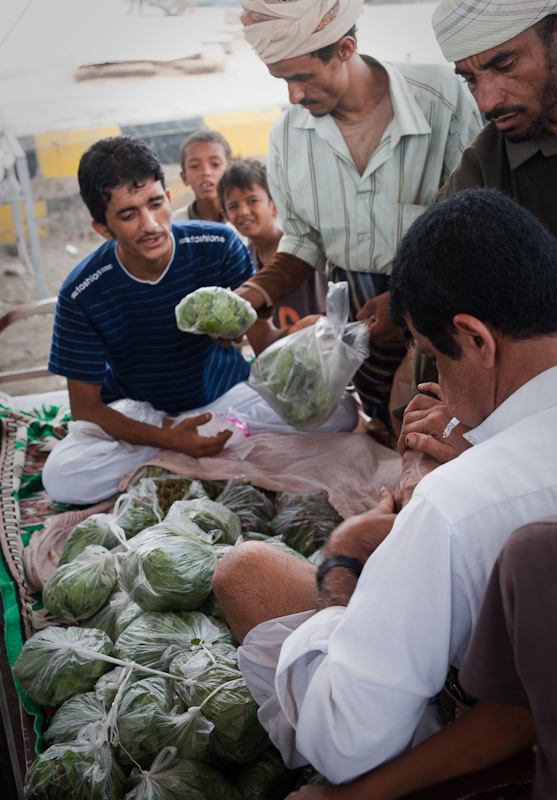
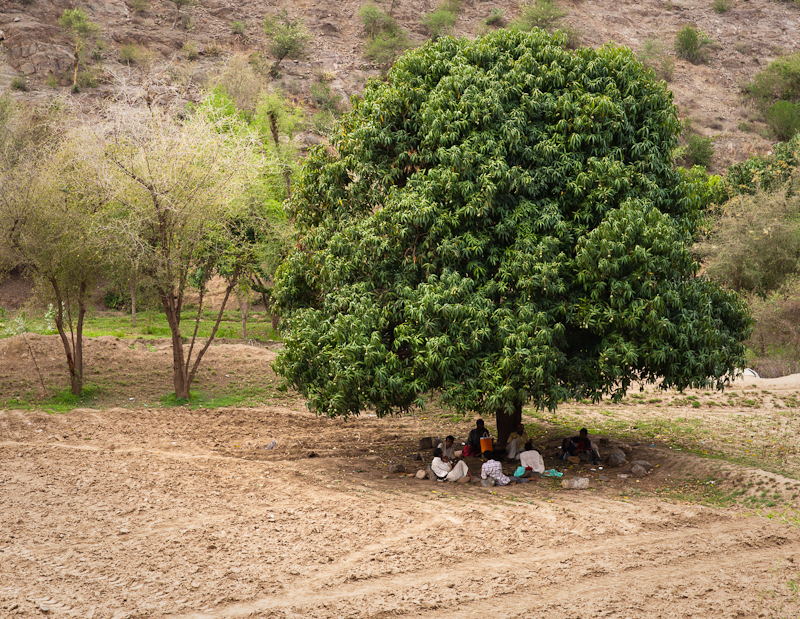
Yemen is one of the world’s poorest countries and has few signs of industry. As a foreign man in Yemen, I saw very few women working and my experience was dominated by interactions with men. The vast majority of women are indoors or covered in the black niqaab, showing only their well made-up eyes. Further reducing productivity, the men usually quit work about noon and spend their afternoon chewing the leaves of the Qat tree, which have a mild stimulant effect and encourage lively conversation among the groups of friends that form to chew together. It was irresistible to attempt the transformation to photojournalist and record this part of the culture. The Qat markets are lively and people are not shy about being photographed. The biggest challenge was understanding how it all worked and recording it honestly.
Landscape
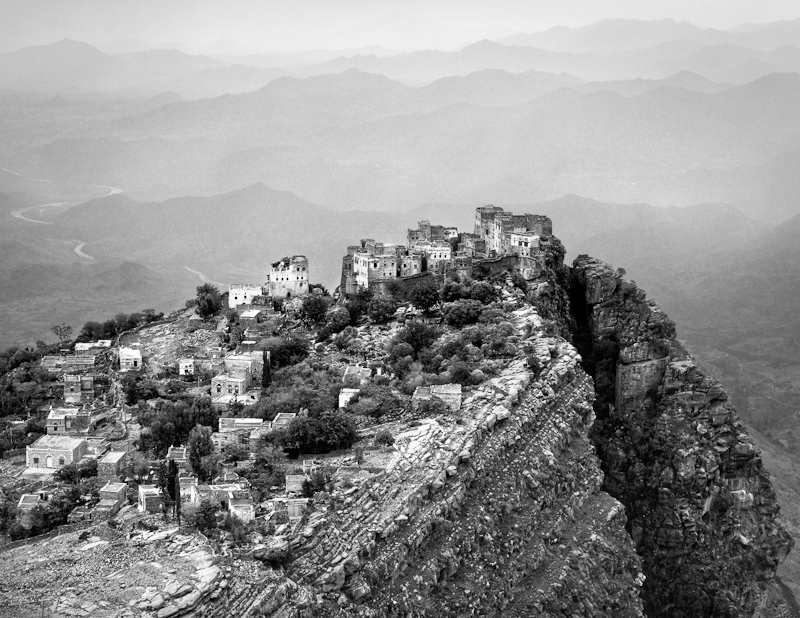
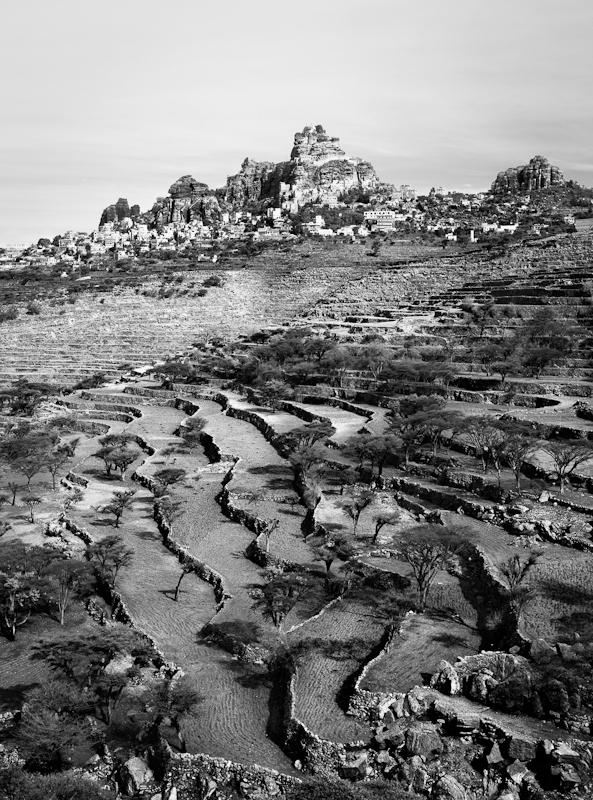
Despite some serious research, Yemen was unlike anything I imagined. The landscape that I came to photograph was much more visually diverse, and historically richer than I expected. The easily defended cliff-top towns of the Yemeni highlands are known as “the tomb of the Turks.” The Wadi Hadhramaut, in eastern Yemen, is home to Shibam, “the Manhattan of the desert,” a 500 year old skyscraper city made of mud bricks,

and a religiously conservative area that is the childhood home of Osama Bin Laden’s father. The Island of Socotra, “the Galapagos of the Indian Ocean,” is a rugged paradise of pristine beaches, towering cliffs, and life found nowhere else, including the fabled Dragon’s Blood Tree. Despite the Yemeni hospitality, the only time I felt completely at ease in Yemen was wandering alone through the canyons of Socotra photographing the Dragon ’ s Blood Trees at sunrise.
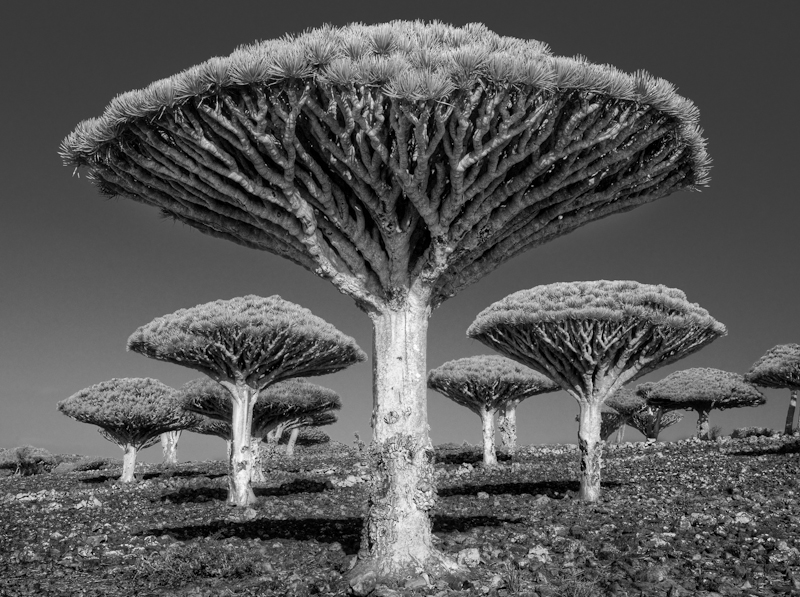
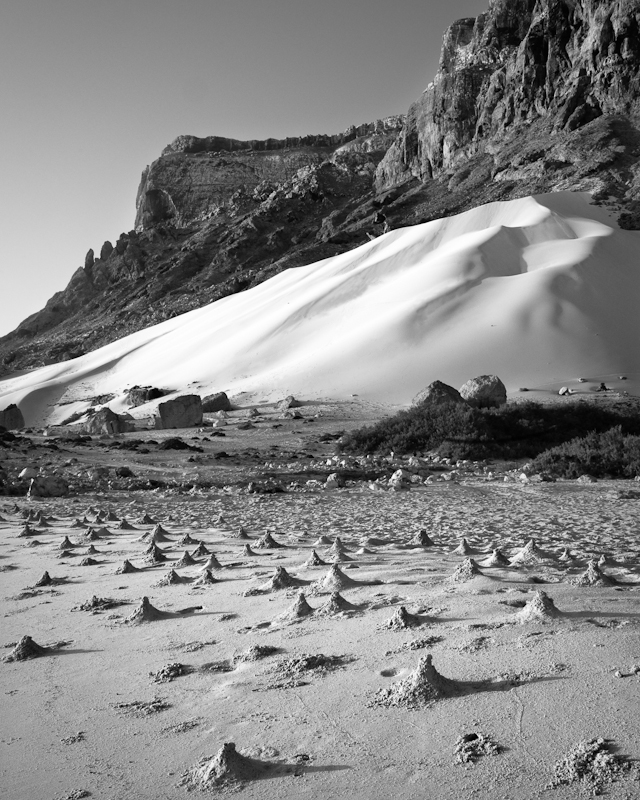
Getting There
The State Department Travel Warning list is not where any of us usually look to find new locations to photograph, but sometimes it just works out that way. I would not have thought to go there without my friend Joshua providing encouragement and guidance. That said, I never once felt threatened or experienced any anti-American sentiment. There is essentially no theft or violent crime and I felt completely comfortable walking alone through the city at night. In the Hadhramaut region we were provided with a military guard, who did not speak English, but was clearly a gentle man with a wonderful sense of humor.
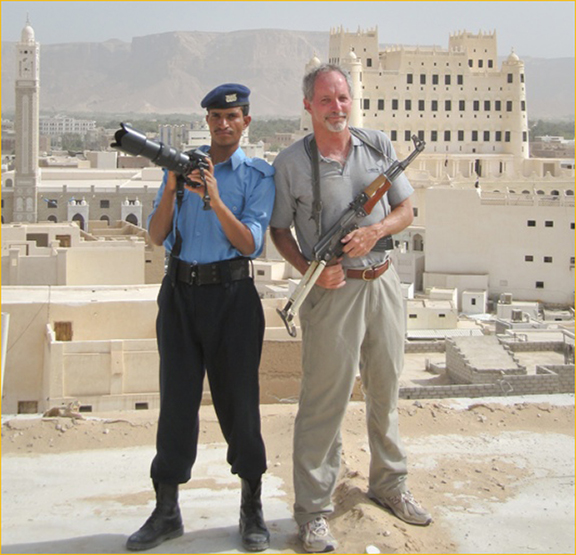
There are many fiights into Sana’a, and if you connect through Dubai, you can see a city that is the exact opposite of Sana’a on your way. There are pre-departure visa requirements to deal with, but I managed to clear customs in Sana’a and back into San Francisco without significant trouble. There are many good tour operators who can meet you at the airport, and arrange accommodations, guides and translators. Accommodations range from palaces to primitive camping, so keep an open mind at all times. Yemen is a cash society, so credit cards are mostly useless, but expenses are a fraction of most popular travel destinations.
If I return to Yemen, I will bring a second camera body, probably the a850, to use as backup and also to make easier use of my 70-300 zoom, There were many situations in which I did not have time to change lenses or did not want to risk the sensor dust that can happen too easily when removing a lens outdoors. Men and children were not reluctant be photographed, and crime is not the problem that it is in most photogenic parts of the world, so I would not hesitate to carry a camera around anywhere.
Hospitality and close friendships are the backbone of Yemeni life, and the rare outsider is treated like a visiting relative, but Yemen is on the cusp of a number of political and environmental disasters that may soon put an end to this centuries old lifestyle. I was glad to see it when I could, and hope to have the chance to return.
December, 2010
Don Whitebread
More information on travel to Yemen can be found at: www.yementourism.com
Update:
September 2011: Yemen – Antiquity at the Crossroads, a 120 page book of photography and writing by Don Whitebread published. Finalist for the Photography Book Now Awards
http://www.blurb.com/bookstore/detail/2251625
March 2011: Despite the traditional nature of Yemeni society, the people are not blind to the opportunity for change sweeping the Arab world. Yemen is in the news almost daily and the political situation is changing fast. My friend Joshua Maricich was one of the four western journalists arrested and deported on March 14, just before the government’s attack on a large group of protesters resulting in nearly 40 deaths. He is safe in Addis Ababa, Ethiopia, and hopes to return to Yemen soon. Here is a link to his blog: http://15yemenroad.tumblr.com/
More images of Yemen by the author can be found at: www.donwhitebread.com
Contact Don at: info@donwhitebread.com
Don lives in Mountain View, CA with his wonderful family, and juggles a career in health care with his love for photographing in wild and unusual places. He is largely self taught, with hours of his youth spent reading Ansel Adams books and experimenting in the darkroom. Over the years, he has been lucky enough to learn from John Sexton, Ray McSavaney, Brigitte Carnochan, and Bob Byers.
His photography has been exhibited recently at the San Francisco Airport Museum, the Yosemite Museum, the San Diego Museum of Natural HIstory, the Viewpoint Photographic Art Center, the Mountain View Center for the Performing Arts, and San Francisco City Hall, and has been published in Black and White Magazine and Yemen Today Magazine.
You May Also Enjoy...
Carbon One
A Review by Jeff Simpson Beast of Burden Lugging around a sturdy aluminum tripod (Manfrotto 055C) and a large backpack of 35mm gear has always
